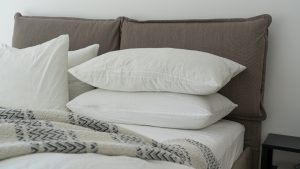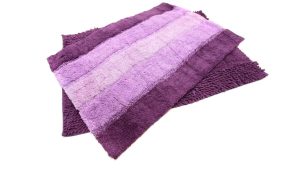What is the best pillow to sleep on when it comes to getting a good night’s sleep, choosing the right pillow is paramount. We understand the importance of finding the perfect pillow to support your head and neck, ensuring that you wake up feeling refreshed and rejuvenated. In this comprehensive guide, we will explore the world of pillows, helping you make an informed decision about the ideal pillows for your needs.
Types of Pillows
1. Memory Foam Pillows
Memory foam pillows have gained immense popularity in recent years and for a good reason. These pillows are known for their ability to conform to the shape of your head and neck, providing excellent support and comfort. They are ideal for individuals who suffer from neck pain or need extra support during their sleep. Memory foam pillows are available in various densities and can cater to a range of sleep preferences.
2. Down Pillows
Down pillows are the epitome of luxury and comfort. Filled with soft duck or goose feathers, these pillows are incredibly soft and provide excellent support. They are perfect for those who enjoy a plush and cozy feel while sleeping. Down pillows come in different levels of firmness, ensuring you can find the perfect fit for your sleeping style.
3. Latex Pillows
Latex pillows are known for their durability and hypoallergenic properties. These pillows are made from natural or synthetic latex, offering excellent support and comfort. Latex is naturally resistant to dust mites and other allergens, making it an excellent choice for allergy sufferers. These pillows maintain their shape well, providing consistent support over time.
4. Feather Pillows
Feather pillows, much like down pillows, offer a soft and comfortable sleeping experience. They are filled with a mix of feathers and down, striking a balance between support and softness. Feather pillows are a great choice for those who want a cozy and moldable option.
5. Buckwheat Pillows
Buckwheat pillows are a unique choice, filled with natural buckwheat hulls. They are highly adjustable and moldable, allowing you to customize the pillow’s firmness and shape to suit your needs. These pillows are excellent for people who suffer from allergies and prefer a natural, eco-friendly option.
Factors to Consider When Choosing a Pillow
Selecting the perfect pillow goes beyond knowing the different types available. To make an informed decision, you should consider the following factors:
1. Sleeping Position
Your sleeping position greatly influences the type of pillow you should choose. If you’re a side sleeper, a firmer pillow is best to maintain proper neck and spine alignment. Back sleepers often benefit from medium-firm pillows, while stomach sleepers may prefer a softer option to prevent strain.
2. Pillow Fill
As mentioned earlier, different pillow fills cater to various needs. Consider your personal preference for softness, support, and allergies when selecting the ideal fill.
3. Pillow Size
The size of your pillow should match your bed size and personal comfort. Standard, queen, and king sizes are readily available, so choose the one that suits your needs best.
4. Pillow Loft
Pillow loft, or thickness, is essential for proper neck support. Taller pillows are better for side sleepers, while lower loft pillows are ideal for back and stomach sleepers.
5. Allergies
If you have allergies, it’s crucial to select a hypoallergenic pillow that resists dust mites and other allergens.
The Pillow Selection Process
Now that you’re armed with knowledge about the types of pillows and essential factors to consider, let’s walk you through the pillow selection process:
1. Determine Your Sleeping Position
Identify whether you’re a side, back, or stomach sleeper. This will be the first step in choosing the right pillow for your needs.
2. Choose the Pillow Fill
Based on your sleeping position and personal preference, opt for the appropriate pillow fill, whether it’s memory foam, down, latex, feather, or buckwheat.
3. Select the Right Size
Match your pillow size to your bed size for a harmonious sleep setup.
4. Assess Pillow Loft
Consider the ideal pillow loft for your sleeping position and neck support needs.
5. Ensure Allergen Resistance
If you suffer from allergies, prioritize hypoallergenic pillow options.
Pillow Maintenance
Selecting the right pillow is just the beginning. To ensure your investment lasts and continues to provide excellent sleep quality, proper pillow maintenance is essential:
I can provide a textual description of different types of pillows that you might consider for a good night’s sleep. Here’s a comparison chart of various pillow types:
| Pillow Type | Description | Ideal Sleepers | Pros | Cons |
|---|---|---|---|---|
| Memory Foam | Contours to your head and neck, providing excellent support. | Side and back | Conforms to your shape, relieves pressure points | May retain heat |
| Down | Soft and luxurious, made from duck or goose feathers. | All types | Plush and cozy feel, long-lasting | Can lose support over time |
| Latex | Durable and hypoallergenic, provides consistent support. | All types | Hypoallergenic, maintains shape well | Can be heavy and less breathable |
| Feather | Soft with a mix of feathers and down, offers a cozy feel. | Stomach and back | Soft and comfortable | May require frequent fluffing |
| Buckwheat | Filled with natural buckwheat hulls, highly adjustable. | All types | Eco-friendly, customizable firmness | Can be noisy and heavy |
This chart provides a quick comparison of the different pillow types, their ideal users, and their pros and cons. Keep in mind that the best pillow for you will depend on your individual sleep preferences and needs.
1. Pillow Protectors
Invest in high-quality pillow protectors to shield your pillows from dust, allergens, and stains. These protective covers are easy to clean and extend the lifespan of your pillows.
2. Pillow Rotation
Rotate your pillows regularly to maintain their shape and support. This practice helps prevent lumps and ensures even wear over time.
3. Pillow Fluffing
Fluffing your pillows daily can restore their loft and plumpness, keeping them comfortable and supportive.
4. Washing and Cleaning
Check the care instructions for your specific pillow type and wash or dry clean them accordingly. For down and feather pillows, frequent washing is not recommended, but spot cleaning can help. Memory foam and latex pillows may have removable, washable covers for easy maintenance.
Pillow Brands and Reviews
When looking for the best pillows, it’s helpful to explore reviews and consider reputable brands. Here are a few well-known brands and some factors to keep in mind:
1. Tempur-Pedic
Tempur-Pedic is a renowned brand in the memory foam category, offering various firmness options and excellent support. Their products often come with extended warranties.
2. MyPillow
MyPillow has gained popularity for its adjustable fill and personalized comfort. Users can add or remove filling to achieve the desired firmness.
3. Coop Home Goods
Coop Home Goods specializes in adjustable shredded memory foam pillows, catering to a wide range of sleep preferences. They also offer hypoallergenic options.
4. Saatva
Saatva offers a selection of eco-friendly and organic pillows, including latex and down alternatives. Their products are known for their high-quality materials.
5. Purple
Purple is recognized for its innovative Hyper-Elastic Polymer material, providing a unique sleeping experience with excellent support and breathability.
Additional Considerations
While the factors mentioned above are essential, it’s also important to think about personal preferences. Factors like temperature regulation, breathability, and additional features like cooling gels or contour designs may play a role in your decision
(FAQs) related to choosing the best pillows for a good night’s sleep:
Q1: How do I determine the best pillow for my sleeping position?
A1: Your sleeping position is a crucial factor. If you’re a side sleeper, opt for a firmer pillow; back sleepers usually prefer medium-firm; and stomach sleepers may like a softer pillow.
Q2: What is the difference between memory foam and latex pillows?
A2: Memory foam pillows conform to your shape and are great for support. Latex pillows are durable and hypoallergenic. The choice depends on your preferences.
Q3: Are down pillows suitable for people with allergies?
A3: Down pillows may trigger allergies in some individuals. If you’re allergic, consider hypoallergenic options or alternative fills like memory foam or latex.
Q4: How often should I replace my pillow?
A4: It’s recommended to replace your pillow every 1-2 years, as pillows can lose support and accumulate allergens over time.
Q5: Are there any cooling pillows for hot sleepers?
A5: Yes, some pillows are designed with cooling gels or breathable materials to regulate temperature and keep you cool during the night.
Q6: Can I wash all types of pillows?
A6: Not all pillows can be machine-washed. Memory foam and latex pillows usually have removable, washable covers. Check the care instructions for your specific pillow.
Q7: What’s the difference between firmness and loft in pillows?
A7: Firmness refers to the feel of the pillow, while the loft is the thickness. For example, a high-loft pillow may be firm and provide excellent neck support.
Q8: How do I know which pillow brand is reliable?
A8: Read reviews from verified buyers and consider well-known brands that offer warranties. Personal preferences play a significant role in choosing a brand.
In Conclusion
A good night’s sleep starts with the right pillow. We’ve explored various pillow types, from memory foam to down, and provided valuable insights into the factors to consider when making your selection. By following our comprehensive guide, you can confidently choose the perfect pillow to ensure a restful night’s sleep.








1 thought on “What is the best pillow to sleep on choose it.”